Drawing for Graphic Design: Essential Tips
Drawing is not just a skill; it's a powerful form of communication that transcends words. When it comes to graphic design, the ability to sketch and illustrate your ideas can dramatically elevate your work. Whether you're a beginner trying to find your footing or an experienced designer looking to refine your skills, understanding the nuances of drawing is essential. In this article, we will explore vital drawing techniques and tips that enhance graphic design skills, helping you create compelling visuals and improve your artistic expression.
Mastering fundamental drawing skills is crucial for graphic design. Think of these basics as the building blocks of your creative arsenal. You might be wondering, what exactly are these basics? Well, they include essential techniques such as line quality, shape, and form. Line quality refers to the thickness and texture of your lines, which can convey different emotions and styles. Shapes are the foundational elements of your designs, while form adds depth and dimension. By honing these skills, you can create designs that not only look good but also resonate with your audience.
Choosing the right tools can significantly impact your drawing quality. Imagine trying to paint a masterpiece with a dull brush; it just wouldn’t work! In graphic design, your tools are your brushes. Here, we discuss various materials that are essential for graphic designers, including pencils, pens, and digital tools. Each of these tools has its unique characteristics and uses. For instance, pencils are great for sketching and shading, while pens can provide crisp lines and details. Digital tools, on the other hand, offer a plethora of options for editing and refining your work.
Both traditional and digital drawing have their merits, and understanding the strengths of each can help you make informed choices in your design process. Traditional drawing allows for a tactile experience that many artists cherish. The feel of the pencil on paper, the smell of the ink—these sensory elements can spark creativity in ways digital tools sometimes cannot. However, digital drawing offers flexibility and efficiency that can streamline your workflow. You can easily undo mistakes, experiment with colors, and even collaborate with others in real-time. So, which one should you choose? The answer is simple: use both! They can complement each other beautifully in graphic design.
Exploring traditional drawing techniques can enhance creativity and provide a tactile experience. When you sketch by hand, you engage with your materials in a way that can lead to unexpected discoveries. The spontaneity of traditional drawing often results in unique designs that might not emerge when working digitally. Plus, there’s something incredibly satisfying about holding a physical piece of art that you’ve created with your own hands.
On the flip side, digital drawing offers unparalleled flexibility and efficiency. Imagine being able to create a piece of art, make adjustments, and share it with clients—all in a matter of minutes. Digital tools like Adobe Illustrator or Procreate allow for easy revisions and experimentation, enabling you to push the boundaries of your creativity without the fear of wasting materials. This can be particularly beneficial for graphic designers who often need to meet tight deadlines and client demands.
Effective sketching is a foundational skill in graphic design. It’s like having a secret weapon in your creative toolkit. Quick sketches can help you communicate ideas and concepts rapidly, allowing for a more fluid design process. Techniques such as thumbnail sketches and gesture drawing can help you capture the essence of your ideas in a matter of minutes. Remember, the goal of sketching is not to create a perfect piece of art but to convey your thoughts visually.
Finding your artistic voice is essential for any graphic designer. Your unique style sets you apart from others in a crowded market. But how do you develop this style? It starts with experimentation. Try different techniques, explore various mediums, and don’t be afraid to make mistakes. Your style will evolve over time as you incorporate elements that resonate with you and your audience.
Inspiration can come from various places. You might find it in nature, art history, or even everyday life. Take a walk outside, visit an art gallery, or browse through design websites. Keep an inspiration journal where you collect images, colors, and ideas that spark your creativity. Integrating these influences into your designs will not only enrich your work but also help you develop a signature style that reflects your personality.
Consistency is key to improvement. Just like any skill, drawing requires regular practice to see progress. Set aside time each day or week to draw, whether it’s sketching in a notebook or working on digital projects. The more you practice, the more confident you’ll become in your abilities. Consider joining a drawing group or taking online classes to keep yourself motivated and accountable.
Understanding common pitfalls in drawing can save time and frustration. Many graphic designers fall into the trap of relying too heavily on digital tools, neglecting the basics of drawing. Others may skip the sketching phase altogether, diving straight into digital work without a clear plan. To avoid these mistakes, always start with sketches, and remember to practice your fundamental drawing skills regularly. This will ensure that your designs are not only visually appealing but also rooted in solid artistic principles.
- What materials do I need to start drawing? You can start with basic materials like pencils, erasers, and sketchbooks. As you progress, you can explore more advanced tools such as pens and digital tablets.
- How often should I practice drawing? Aim for at least a few times a week. Consistency is key, so find a schedule that works for you.
- Can I develop my style as a graphic designer? Absolutely! Experimentation and practice are essential in finding and refining your unique artistic voice.
- Is traditional drawing still relevant in the digital age? Yes! Traditional drawing techniques can enhance creativity and provide a foundation for digital work.
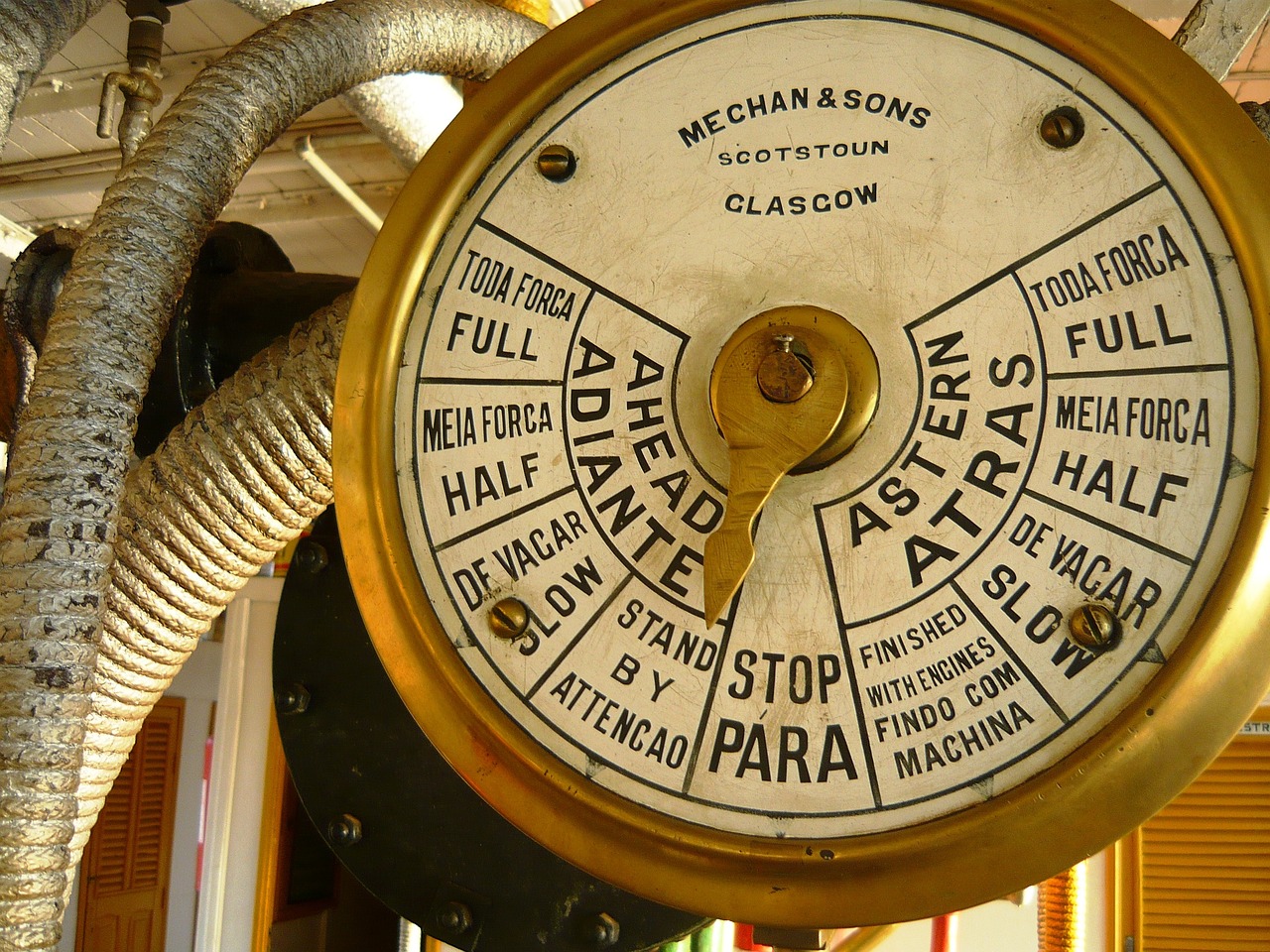
Understanding the Basics of Drawing
Mastering the fundamentals of drawing is not just an option; it's a necessity for anyone diving into the world of graphic design. Think of drawing as the foundation of a house; without a solid base, everything else can crumble. The essential techniques that every designer should be familiar with include line quality, shape, and form. These elements serve as the building blocks of your artistic expression, enabling you to create visually compelling designs that communicate effectively.
Let’s break it down a bit. Line quality refers to the thickness, texture, and fluidity of the lines you draw. A strong line can convey emotion and movement, while a delicate line can express subtlety and grace. For instance, think about how a thick, bold line might give a sense of strength or urgency, whereas a thin, wavy line could evoke a feeling of calmness or whimsy. Understanding how to manipulate line quality can dramatically affect the mood and message of your artwork.
Next up is shape. Shapes are the building blocks of all visual art. They can be geometric, like squares and circles, or organic, like the curves of a leaf or the contours of a human figure. Recognizing and utilizing shapes effectively allows you to create a sense of structure and balance in your designs. When you combine different shapes, you can create complex compositions that draw the viewer's eye and guide them through your work.
Now, let’s talk about form. While shape refers to the two-dimensional outline of an object, form adds depth and dimension, transforming flat shapes into three-dimensional objects. This is where shading and perspective come into play. By understanding how light interacts with objects, you can create the illusion of depth, making your designs more realistic and engaging. Consider how a simple sphere can become a three-dimensional object through the use of light and shadow.
To summarize, here are the three essential elements you should focus on:
- Line Quality: The characteristics of the lines you draw.
- Shape: The two-dimensional outlines that form the basis of your designs.
- Form: The three-dimensional aspect that adds depth and realism to your artwork.
By mastering these basics, you’ll not only enhance your graphic design skills but also unlock new avenues for creativity. Remember, drawing is like a language; the more fluently you speak it, the more effectively you can communicate your ideas. So grab your pencil, sketchbook, or digital tablet, and start exploring these foundational techniques. You'll be amazed at how much your skills can improve with practice and dedication!
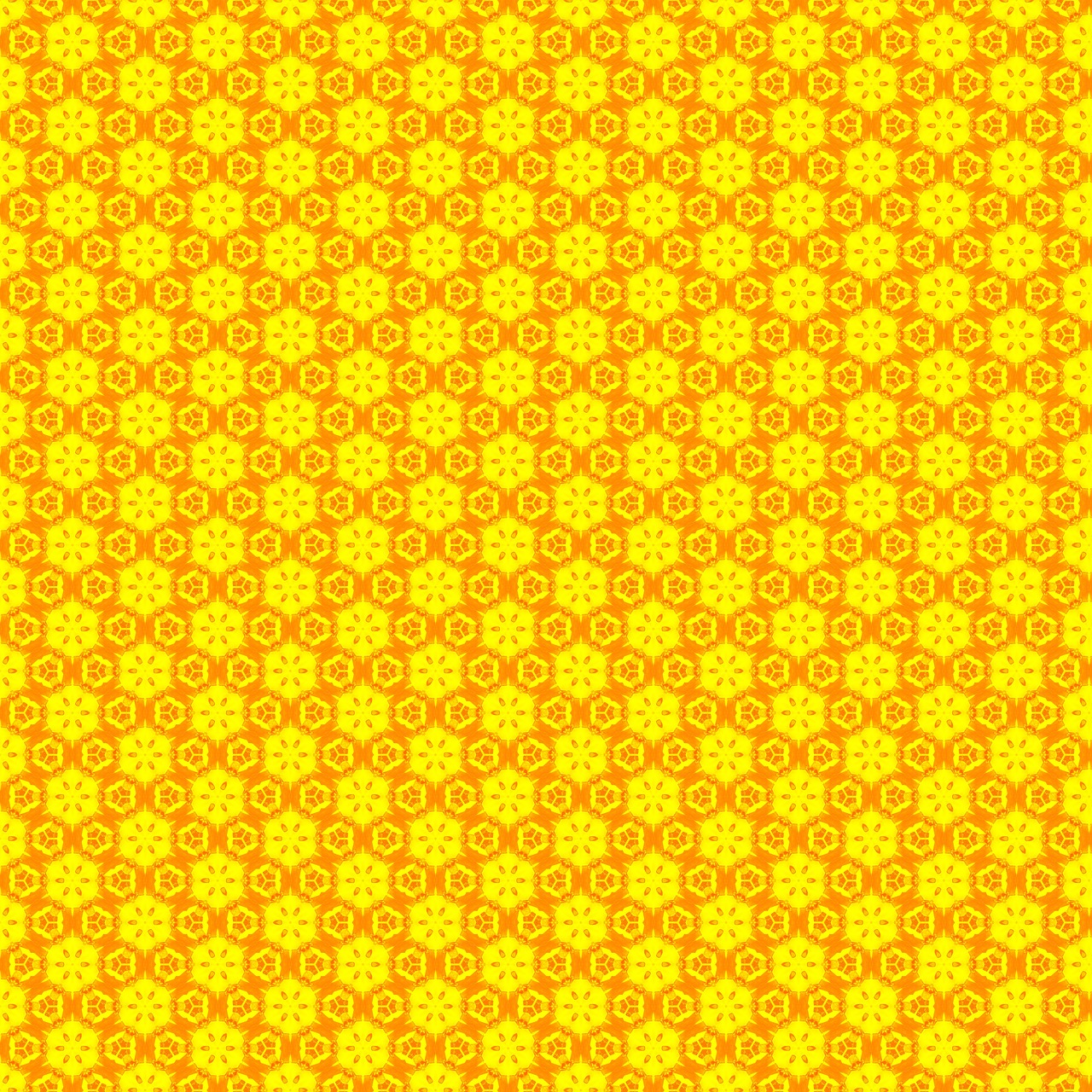
Tools and Materials for Graphic Drawing
When it comes to graphic drawing, the tools and materials you use can make a world of difference in the quality of your work. Choosing the right tools is like selecting the perfect ingredients for a recipe; it can elevate your creations from ordinary to extraordinary. Whether you're sketching ideas on paper or creating stunning digital illustrations, having the right equipment is essential. Let's dive into the various tools that can enhance your graphic design journey.
First and foremost, let's talk about traditional drawing tools. Pencils, pens, and markers are the backbone of any artist's toolkit. A good set of pencils, ranging from hard to soft, allows you to play with line quality and shading. For instance, a 2B pencil is great for creating rich, dark lines, while an H pencil is perfect for fine, light strokes. Pens, especially fine-tipped ones, can add precision and clarity to your sketches. Markers, on the other hand, offer vibrant colors and are fantastic for bold designs.
Here’s a quick breakdown of essential traditional tools:
- Pencils: Various grades for different effects.
- Inking Pens: For clean, crisp lines.
- Markers: Ideal for adding color and depth.
- Sketchbooks: A portable canvas for your ideas.
Now, let’s not forget about the digital tools. In today's world, digital drawing has become increasingly popular among graphic designers. Software like Adobe Illustrator and Procreate offers a plethora of features that can aid in creating stunning visuals. With digital tools, you can easily undo mistakes, experiment with colors, and manipulate your designs in ways that traditional methods can't match. Plus, the ability to work with layers allows for more complex compositions without the mess of physical materials.
When selecting digital tools, consider the following:
- Graphics Tablet: A must-have for precision and control.
- Design Software: Choose one that fits your style and needs.
- Stylus: Essential for detailed work and comfort.
To help you understand the differences between traditional and digital tools, here’s a simple comparison:
| Aspect | Traditional Tools | Digital Tools |
|---|---|---|
| Flexibility | Limited; once it's on paper, it's there | High; easily modify and adjust |
| Portability | Need to carry physical materials | Can work on multiple devices |
| Learning Curve | Generally intuitive | Varies by software complexity |
| Cost | Initial investment in materials | Software can be pricey, but tools can be free |
Ultimately, the choice between traditional and digital tools comes down to personal preference and the specific requirements of your project. Many graphic designers find that a combination of both methods works best for them, allowing for a rich, diverse approach to their art. So, whether you’re sketching out ideas on paper or diving into the digital realm, remember that the tools you choose will shape your creative journey.
Q: What are the best pencils for beginners?
A: For beginners, a basic set of pencils ranging from 2H to 6B is ideal. This range allows for versatility in shading and line work.
Q: Is it necessary to invest in expensive digital tools?
A: Not necessarily. While high-end tools can offer more features, many free or affordable software options are available that cater to beginners and can still produce amazing results.
Q: How often should I practice drawing?
A: Consistency is key! Try to draw a little every day, even if it's just for 10-15 minutes. Regular practice helps improve your skills over time.
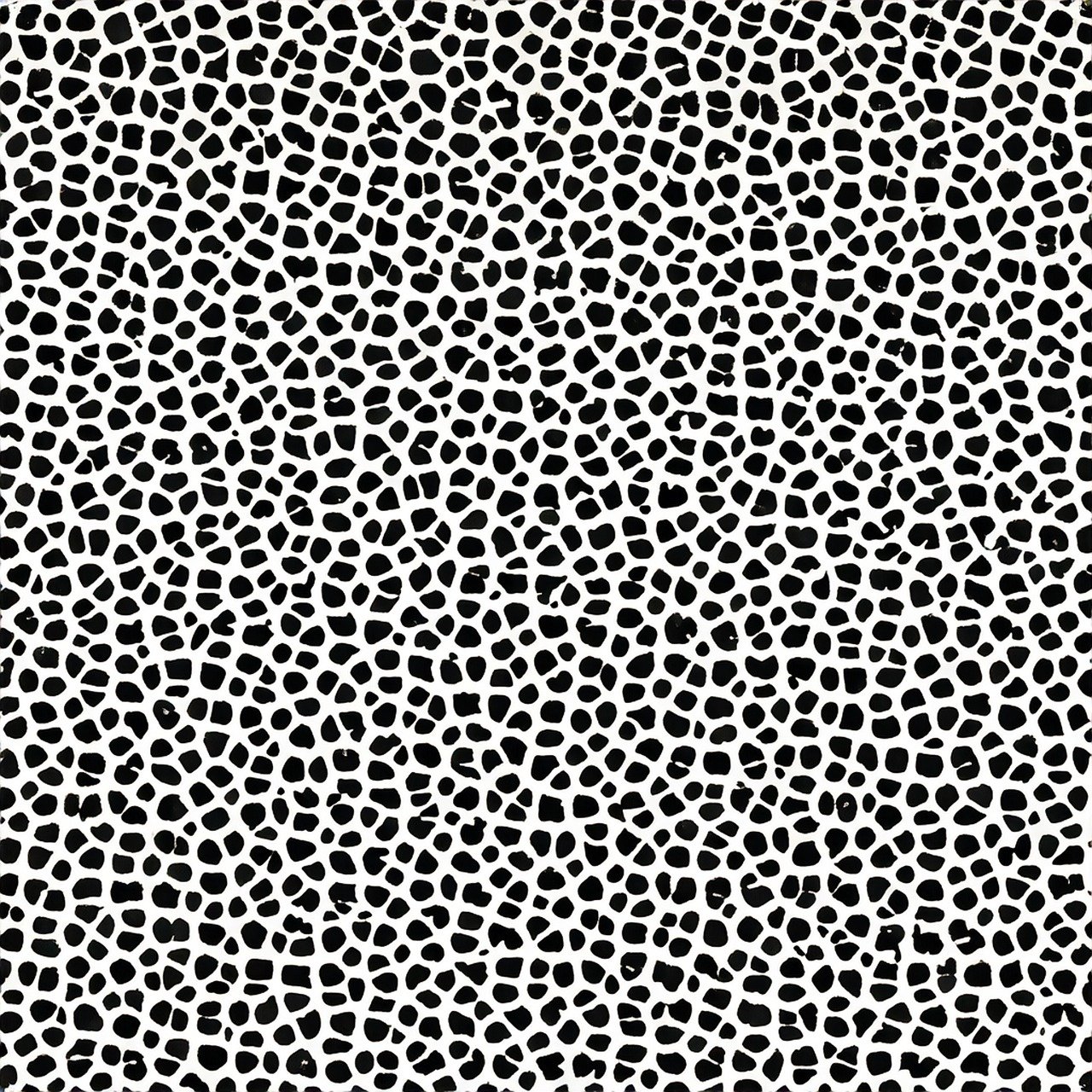
Traditional vs. Digital Drawing
When it comes to graphic design, the debate between traditional and digital drawing often sparks passionate discussions among artists. Each method has its own unique charm and set of advantages, making them suitable for different aspects of the creative process. Traditional drawing, with its rich history and tactile nature, often evokes a sense of nostalgia. There's something undeniably satisfying about the feel of pencil on paper, the smell of ink, and the ability to create something tangible. It's like cooking from scratch; you’re fully immersed in the process, and every stroke feels personal.
On the other hand, digital drawing offers a plethora of advantages that can significantly enhance a designer's workflow. It’s like having a magic wand that allows for instant changes, endless colors, and a variety of brushes at your fingertips. With digital tools, artists can easily manipulate their work, undo mistakes, and experiment without the fear of ruining a piece. The flexibility of digital drawing cannot be overstated; it opens up a world of possibilities for graphic designers, making it easier to collaborate and share work with clients and colleagues.
Let’s dive a bit deeper into the strengths of both methods:
| Aspect | Traditional Drawing | Digital Drawing |
|---|---|---|
| Medium | Pencil, ink, charcoal, etc. | Software (e.g., Adobe Illustrator, Procreate) |
| Flexibility | Limited; changes can be difficult | High; easy to edit and manipulate |
| Learning Curve | Varies; requires practice with physical tools | Can be steep; requires software knowledge |
| Cost | Initial investment in materials | Software subscription and hardware costs |
| Output | Tangible artwork | Digital files, easy to reproduce |
While traditional drawing allows for a deeper connection to the medium and often results in unique, one-of-a-kind pieces, digital drawing can streamline the design process and enhance productivity. Many artists find that a combination of both methods works best for them. For instance, starting with traditional sketches and then transitioning to digital tools for refinement and color can yield stunning results. This hybrid approach allows designers to harness the best of both worlds, creating a workflow that is both efficient and creatively fulfilling.
Ultimately, the choice between traditional and digital drawing boils down to personal preference and the specific needs of a project. Whether you’re sketching out ideas on paper or bringing them to life on a screen, the most important factor is to embrace the method that resonates with you and enhances your creativity. After all, the goal of any graphic designer is to communicate ideas visually, and both traditional and digital drawing offer powerful avenues to achieve that.
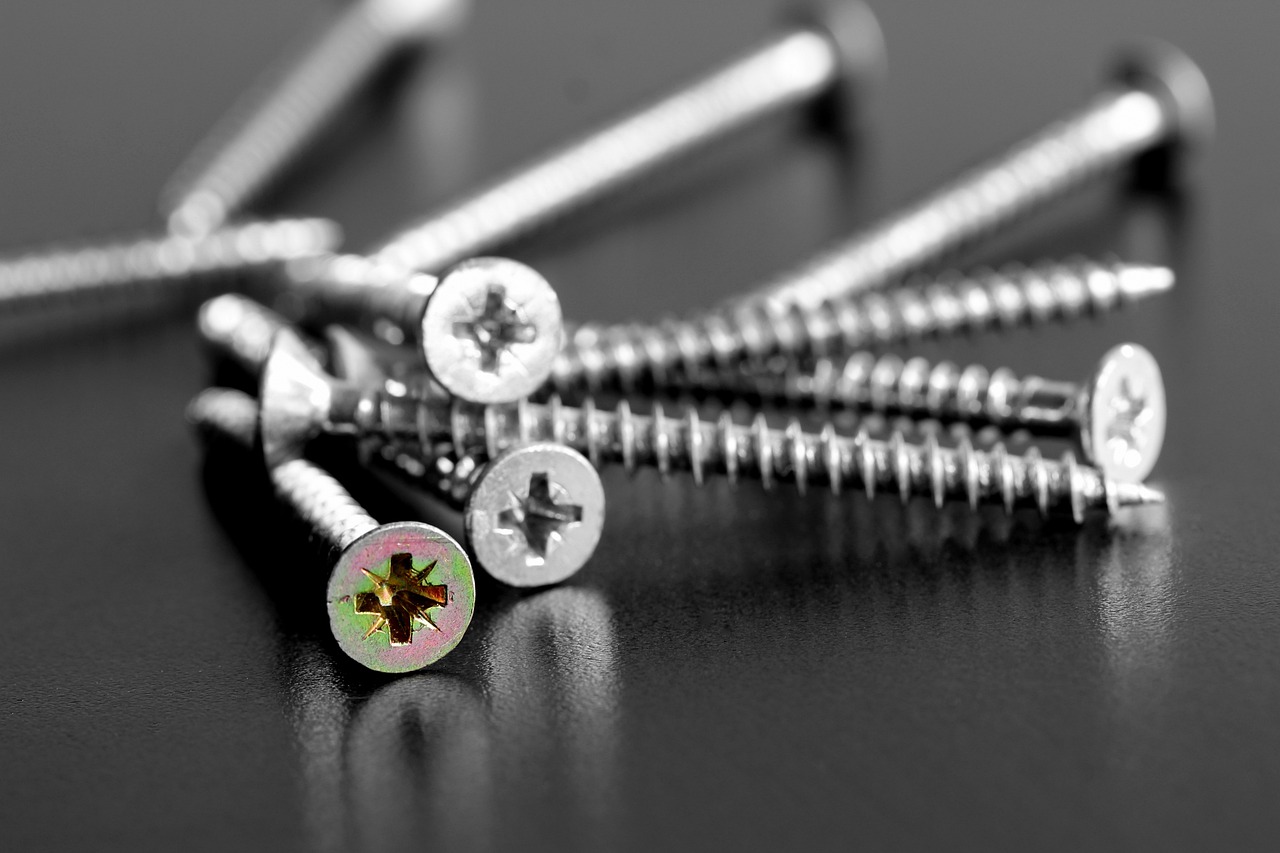
Benefits of Traditional Drawing
When it comes to graphic design, many might lean towards digital tools for their convenience and efficiency. However, traditional drawing holds a treasure trove of benefits that can enhance your artistic journey. For starters, the tactile experience of putting pencil to paper can ignite a spark of creativity that digital screens simply can't replicate. Have you ever felt the rush of inspiration as your hand glides over textured paper, capturing your thoughts in real-time? That connection with your medium can lead to unexpected results and unique ideas.
Moreover, traditional drawing fosters a deeper understanding of fundamental art principles. When you sketch by hand, you engage more directly with the elements of line, shape, and form. This hands-on approach helps you develop a keen eye for detail and proportion, which are crucial skills in graphic design. Think of it as building a strong foundation for a house; without solid groundwork, the structure is bound to falter. Similarly, mastering traditional techniques equips you with the skills to tackle more complex digital projects later on.
Another significant advantage is the freedom to experiment without the constraints of software. You can easily try out different styles, techniques, and materials, like charcoal, ink, or watercolor, to see what resonates with your vision. The beauty of traditional drawing lies in its impermanence. Mistakes are part of the process, and often, they lead to delightful surprises. Instead of hitting 'undo' on a digital canvas, you can embrace the unpredictability of traditional methods, which can lead to more authentic and expressive artwork.
Furthermore, traditional drawing can serve as a fantastic stress reliever. In a world dominated by screens and technology, taking a break to sketch can be a meditative experience. It allows your mind to wander and your creativity to flow freely, offering a refreshing escape from the hustle and bustle of daily life. Just imagine sitting in a park, with the sun shining down, sketching the world around you. It’s not just about creating art; it’s about enjoying the process.
To sum it up, the benefits of traditional drawing extend far beyond mere aesthetics. It enhances creativity, strengthens foundational skills, encourages experimentation, and provides a therapeutic outlet. For graphic designers, integrating traditional drawing into your routine can lead to a richer, more rewarding artistic experience. So why not grab that sketchbook and pencil? You might just discover a whole new dimension to your design practice!
- What materials do I need for traditional drawing? You can start with basic items like pencils, erasers, sketchbooks, and pens. As you progress, consider exploring different mediums such as charcoal or watercolor.
- How can I improve my traditional drawing skills? Consistent practice is key. Try to draw regularly, study the work of artists you admire, and don’t be afraid to experiment with different techniques.
- Is traditional drawing still relevant in a digital world? Absolutely! Traditional drawing enhances your understanding of design principles and can inspire your digital work. Many successful designers blend both methods in their practice.

Advantages of Digital Drawing
Digital drawing has revolutionized the way graphic designers create and manipulate their artwork. One of the most significant advantages is the flexibility it offers. Unlike traditional mediums, where mistakes can be costly and time-consuming to correct, digital tools allow artists to undo and redo actions with a simple click. This means that you can experiment freely, pushing the boundaries of your creativity without the fear of ruining a piece.
Furthermore, digital drawing provides an astonishing range of tools and features that enhance the creative process. From customizable brushes that mimic traditional painting techniques to layers that enable intricate detailing, the possibilities are endless. Imagine being able to adjust the opacity, blend colors seamlessly, or create complex compositions without the hassle of physical materials. This capability not only speeds up the workflow but also enriches the overall design experience.
Another notable benefit of digital drawing is the ease of sharing and collaboration. In today’s interconnected world, designers often work with teams across different locations. Digital files can be shared instantly, allowing for real-time feedback and collaboration. This means you can receive input from clients or peers while you’re still in the creative process, leading to a more refined final product. Plus, the ability to export your work in various formats ensures that your designs are ready for any platform, whether it be for print or online use.
Additionally, digital drawing can be more cost-effective in the long run. While the initial investment in software and hardware may seem high, consider the savings on materials like paper, ink, and paints. Digital artists can create multiple versions of a design without incurring extra costs, making it an economical choice for many graphic designers. Moreover, the ability to store and organize digital files efficiently means you can revisit and repurpose old designs, further maximizing your resources.
Let’s not forget about the environmental impact of digital drawing. By reducing the need for physical materials, digital artists contribute to less waste and a smaller carbon footprint. This aspect resonates with many designers who are conscious of sustainability and wish to make a positive impact through their work.
In conclusion, the advantages of digital drawing are numerous and compelling. From enhancing creativity and collaboration to being cost-effective and environmentally friendly, it’s no wonder that many graphic designers are making the switch. As you delve into the world of digital art, embrace these benefits and let them inspire your creative journey!
- What software is best for digital drawing? There are several excellent software options, including Adobe Illustrator, CorelDRAW, and Procreate, each catering to different needs and skill levels.
- Do I need a special tablet for digital drawing? While a graphics tablet can enhance your experience, many artists start with a standard tablet or even use their touchscreen devices.
- Can I combine traditional and digital drawing techniques? Absolutely! Many artists find that blending both methods can lead to unique and innovative designs.

Sketching Techniques for Graphic Designers
When it comes to graphic design, sketching is not just a preliminary step; it's a vital part of the creative process that allows designers to communicate ideas quickly and effectively. Whether you're brainstorming concepts or refining details, mastering various sketching techniques can significantly enhance your design workflow. So, what are some effective techniques that every graphic designer should have in their toolkit?
First off, let's talk about the gesture drawing. This technique is all about capturing the essence of a subject in a short amount of time. It helps you focus on the movement and flow, rather than getting bogged down in the details. Imagine trying to capture a dancer in motion; you wouldn’t want to get stuck on their facial features but rather convey the energy and pose. This technique is particularly useful for designers who need to sketch human figures or dynamic objects quickly.
Next, we have contour drawing, which emphasizes the outlines of a subject. This method encourages you to observe closely and translate what you see onto paper. It’s like tracing the silhouette of an object without lifting your pencil. This technique can help you develop a strong sense of form and proportion, which is essential in graphic design. You’ll find that contour drawing can serve as a foundation for more detailed illustrations later on.
Another valuable technique is thumbnail sketches. These are small, quick drawings that help you explore multiple ideas without committing to any single one. Think of them as the brainstorming phase of your design process. By creating a series of thumbnails, you can experiment with different compositions and layouts, allowing you to find the most effective way to convey your message. It's like trying on different outfits before deciding on the one that fits just right!
Furthermore, value sketching is a technique that focuses on light and shadow rather than line work. This method can help you understand how light interacts with objects, which is crucial for creating depth in your designs. By using varying shades of gray or colors, you can convey mood and atmosphere, giving your designs a more polished and professional look.
Lastly, don't underestimate the power of digital sketching. With the rise of software like Adobe Fresco and Procreate, designers can sketch directly on their tablets, making it easier to experiment with color, texture, and effects. Digital sketching allows for quick edits, layer management, and the ability to integrate your sketches directly into your design projects. It’s like having a sketchbook that never runs out of pages!
Incorporating these techniques into your practice can lead to a more efficient and enjoyable design process. Remember, the key is to find a balance between speed and accuracy, allowing your creativity to flow freely. So grab your sketchbook or tablet, and let your ideas take shape!
- What is the best way to start sketching as a graphic designer?
Start with simple shapes and objects around you. Practice gesture and contour drawing to build your observational skills. - How often should I practice sketching?
Consistency is crucial. Aim to sketch daily, even if it's just for a few minutes. - Can digital sketching replace traditional methods?
Both methods have their advantages. Digital sketching offers flexibility, while traditional sketching can enhance your tactile skills. - What tools do I need for sketching?
For traditional sketching, a good set of pencils, erasers, and sketchbooks are essential. For digital sketching, a tablet and stylus along with sketching software are recommended.

Developing Your Unique Style
Finding your artistic voice is not just a journey; it's an adventure filled with exploration, experimentation, and self-discovery. For graphic designers, developing a unique style is essential as it sets you apart in a crowded market. It's like crafting your signature dish in a world full of restaurants; you want to be memorable and distinct. So, how do you go about this? Let's dive into some effective strategies that can help you carve out your niche in the vast landscape of graphic design.
First and foremost, embracing your influences is crucial. Think about the artists, designers, or even photographers whose work resonates with you. What elements of their style do you admire? Is it their use of color, their composition, or perhaps their subject matter? By analyzing what you love, you can start to identify patterns that might inspire your own work. For instance, if you’re drawn to vibrant colors and geometric shapes, consider how you can incorporate those elements into your designs. This isn’t about copying; it’s about understanding what makes you tick and using that knowledge to inform your unique style.
Next, experimentation plays a vital role in developing your style. Don’t be afraid to step outside your comfort zone. Try different mediums, techniques, and styles. If you usually work digitally, pick up a sketchbook and draw by hand. If you’re a minimalist, challenge yourself to create something more elaborate. This experimentation allows you to discover what feels authentic to you. Remember, even the most celebrated artists went through phases of trial and error before finding their signature look.
Additionally, consistency is key. While experimentation is important, maintaining a consistent approach in your work helps solidify your style. Think of it as creating a brand for yourself. When people see your work, you want them to recognize it instantly. This doesn’t mean you can’t evolve; rather, it’s about having a cohesive thread that ties your work together. For example, if you have a specific color palette or typography style that you frequently use, it can become a hallmark of your designs.
To further develop your unique style, consider collaborating with others. Working with fellow creatives can open your eyes to new perspectives and techniques. It’s like mixing different flavors in a recipe; sometimes, the most unexpected combinations yield the best results. Whether it’s a fellow designer, an illustrator, or even a photographer, collaboration can spark ideas that you might not have considered on your own.
Lastly, don't forget to seek feedback. Sharing your work with others can provide valuable insights. Constructive criticism helps you see your designs from different angles and can guide you in refining your style. Join design communities, participate in critique sessions, or simply ask friends for their honest opinions. Remember, feedback is a tool for growth, not a personal attack.
In conclusion, developing your unique style as a graphic designer is a blend of self-exploration, experimentation, and consistency. It’s about embracing influences, trying new things, collaborating, and remaining open to feedback. So, grab your sketchbook, fire up your design software, and start the journey of crafting a style that’s authentically yours. After all, the world is waiting to see what you’ll create!
- How long does it take to develop a unique style? - Developing a unique style can vary greatly from person to person. It may take months or even years, but the key is to remain patient and persistent.
- Can I change my style over time? - Absolutely! Many artists evolve and change their style as they grow. It's a natural part of the creative process.
- What if I don’t know where to start? - Start by exploring different artists and styles that inspire you. Experiment with various techniques and mediums to see what resonates with you.

Inspiration Sources for Artists
Finding inspiration can sometimes feel like chasing shadows, especially when you're trying to ignite your creativity as a graphic designer. But fear not! Inspiration is all around you, waiting to be discovered. From the intricate patterns of nature to the vibrant colors of urban life, the world is a treasure trove of ideas. Think of it like a buffet—there's something for everyone, and all you have to do is take a seat and start sampling!
One of the most effective ways to spark your creativity is by immersing yourself in nature. Whether it's a serene park, a bustling forest, or even your backyard, the shapes, colors, and textures found in the natural world can serve as a powerful muse. Have you ever noticed how a simple leaf can inspire an entire design? The subtle variations in color and form can lead to stunning graphics that resonate with viewers.
Another fantastic source of inspiration comes from art history. Exploring the works of past masters can provide insight into different styles and techniques that you can adapt to your own work. From the bold strokes of Van Gogh to the intricate details of Renaissance art, there's a wealth of knowledge embedded in these pieces. Why not create a mood board featuring your favorite artists? This can serve as a visual reference, allowing you to blend their influences with your unique style.
Don't forget about the power of modern media. Platforms like Instagram, Pinterest, and Behance are filled with creative minds sharing their work. By following artists and designers you admire, you can stay updated on current trends and techniques. Plus, these platforms often spark ideas you never knew you had! Just remember to engage with the community—commenting and sharing can lead to fruitful discussions and collaborations.
Lastly, consider looking for inspiration in everyday life. The architecture of a building, the layout of a magazine, or even the design of a product can ignite your imagination. Keep a sketchbook handy to jot down ideas or doodle whenever inspiration strikes. You never know when the next big idea will hit you!
In summary, inspiration can flow from a myriad of sources. Whether you're wandering through nature, diving into art history, scrolling through social media, or observing the world around you, keep your eyes wide open. The key is to remain curious and open to new experiences. Remember, creativity is not just about what you create; it's about how you see the world!
- Where can I find inspiration for my graphic design projects? Inspiration can be found in nature, art history, modern media, and everyday life. Keep your senses alert!
- How do I develop my unique style as a graphic designer? Experiment with different techniques, study various artists, and combine influences to create a style that reflects your personal creativity.
- What tools can help me in my drawing practice? Both traditional tools like pencils and pens, and digital tools like graphic tablets and design software are essential for enhancing your drawing skills.
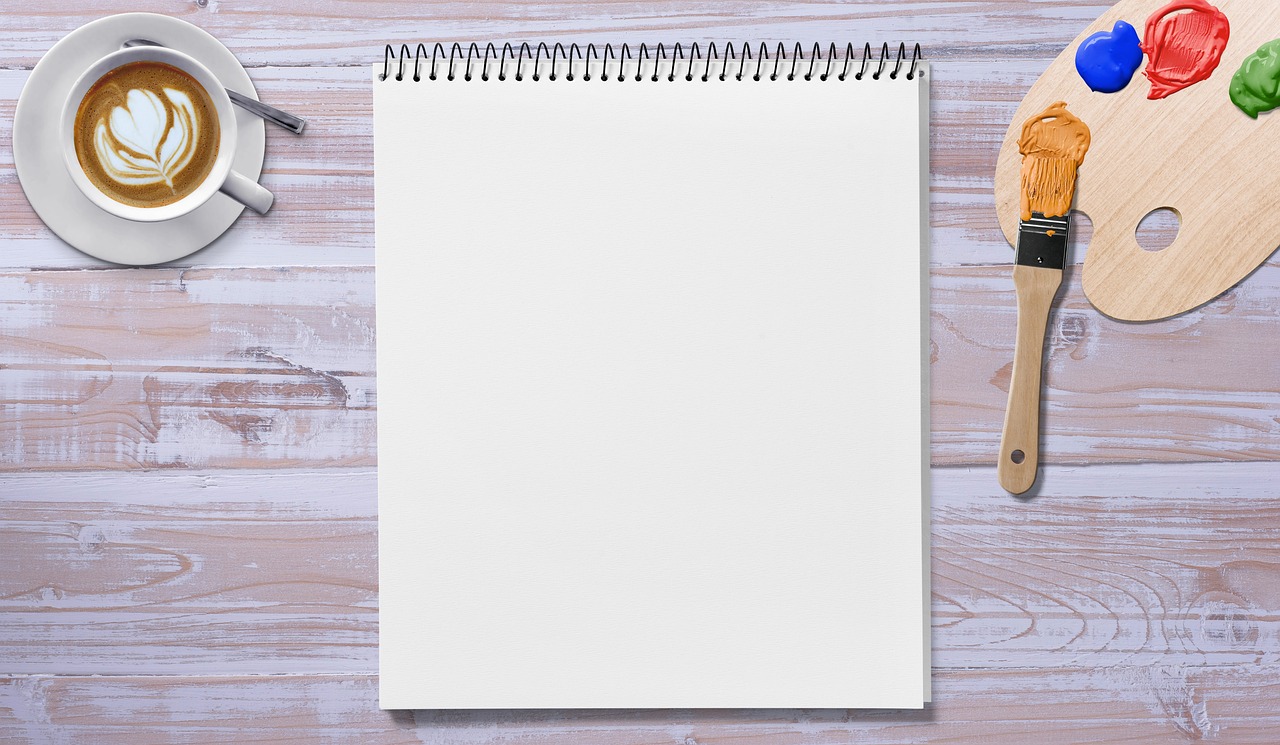
Practicing Consistency in Drawing
When it comes to honing your drawing skills for graphic design, consistency is king. Just like a musician practices scales daily to master their instrument, a graphic designer must dedicate time to drawing regularly. This doesn’t mean you need to spend hours each day, but establishing a routine can dramatically enhance your skills over time. Think of it as building a muscle; the more you train it, the stronger it becomes. So, how do you cultivate this consistency? Here are some tips to help you get started.
First, set a specific time each day or week dedicated solely to drawing. This could be as little as 15 minutes a day. The key is to make it a non-negotiable part of your schedule. You might even consider pairing your drawing time with another daily activity, like enjoying your morning coffee or winding down before bed. This way, it becomes a delightful ritual rather than a chore.
Next, keep your drawing materials easily accessible. If you have to dig through drawers or search for that perfect sketchbook, you’re less likely to pick it up. Instead, create a designated drawing space where everything you need is within arm’s reach. This could be a cozy corner of your home or even a portable kit that you can take with you wherever you go. Convenience breeds consistency.
Additionally, consider using prompts or challenges to keep your practice fresh and exciting. You could join online drawing challenges or set personal projects that push your creative boundaries. For instance, try drawing a different object or scene each day, or dedicate a week to sketching human figures. This not only keeps your practice engaging but also encourages you to explore various styles and techniques, further enriching your graphic design capabilities.
Another effective method is to track your progress. You might think, “How can I track something as fluid as drawing?” Well, it’s easier than you think! Create a simple
| Date | Duration | Focus Area |
|---|---|---|
| 2023-10-01 | 30 minutes | Sketching Still Life |
| 2023-10-02 | 20 minutes | Character Design |
| 2023-10-03 | 15 minutes | Gesture Drawing |
Finally, don't forget to celebrate your achievements, no matter how small. After completing a week of consistent drawing, reward yourself with something enjoyable, like a new sketchbook or a fun art supply. This positive reinforcement will not only make you feel good about your efforts but will also encourage you to continue the habit.
In conclusion, practicing consistency in drawing is about creating a routine that works for you, setting achievable goals, and finding joy in the process. By following these tips, you’ll not only improve your drawing skills but also enhance your overall graphic design proficiency. Remember, every stroke you make is a step towards your artistic growth!
- How often should I practice drawing? Aim for at least 15-30 minutes daily, but consistency is more important than duration.
- What should I focus on during my practice sessions? Vary your focus areas, such as shapes, shading, or specific subjects, to keep things interesting.
- Can I practice drawing digitally? Absolutely! Digital drawing is a fantastic way to practice and can complement traditional methods.
- How do I stay motivated to draw consistently? Set goals, track your progress, and reward yourself for milestones to stay motivated.
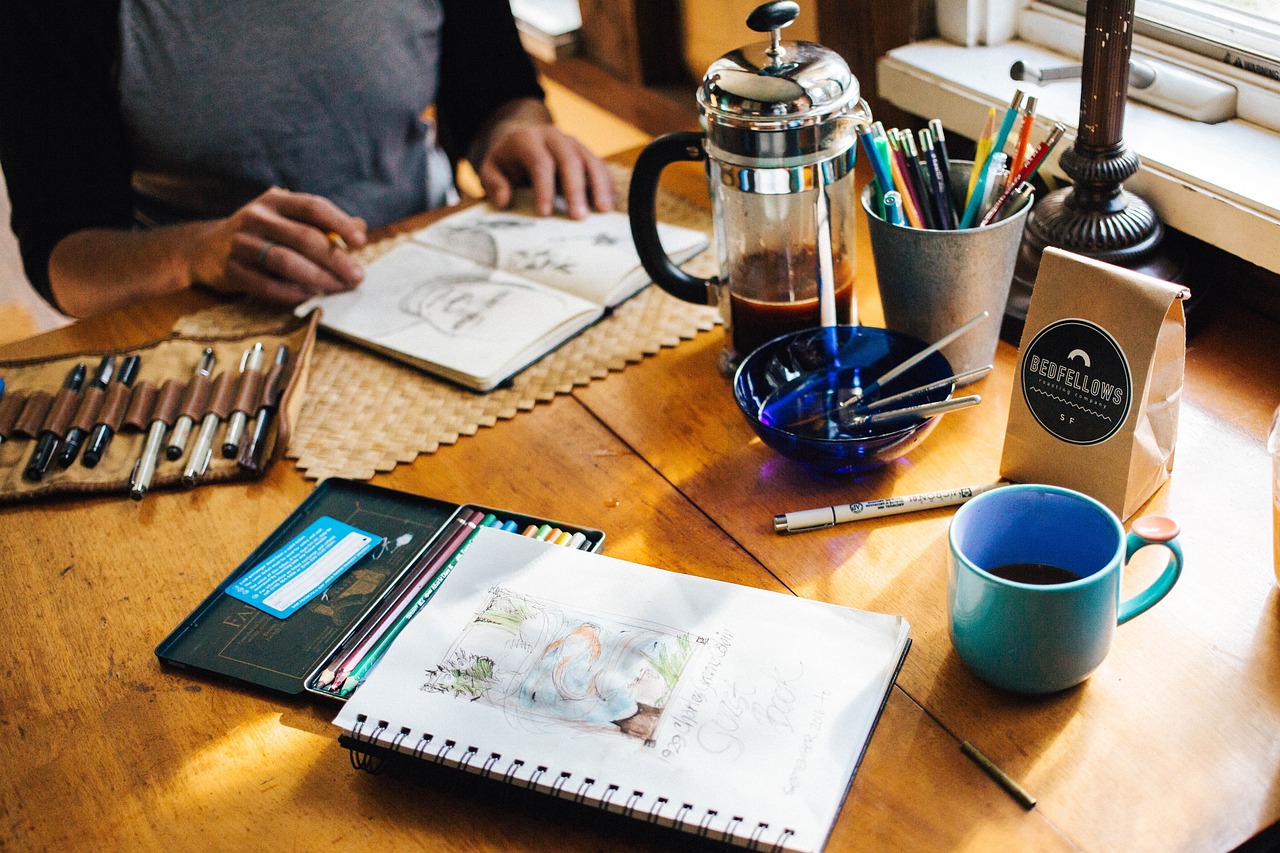
Common Mistakes to Avoid
When diving into the world of graphic design, it's all too easy to stumble into a few common pitfalls that can hinder your progress and creativity. One of the most significant mistakes many designers make is neglecting the importance of fundamental drawing skills. You might think that since you're using digital tools, you can skip the basics, but that's a slippery slope! Without a solid foundation in drawing, your designs can lack depth and character. So, take the time to practice your line quality, shapes, and forms. Trust me, it will pay off in the long run.
Another frequent error is failing to experiment with different styles. Many designers get comfortable in their own bubble, sticking to what they know best. But creativity thrives on exploration! Don’t be afraid to try new techniques or styles; you might just discover a hidden talent or a fresh perspective that could elevate your work. Remember, every artist has their own unique voice, and sometimes stepping outside your comfort zone can lead to the most exciting results.
Moreover, overlooking the importance of feedback can be detrimental to your growth. Whether it’s from peers, mentors, or even clients, constructive criticism is invaluable. It’s easy to get attached to your designs, but outside perspectives can highlight areas for improvement that you might have missed. So, embrace feedback! It’s a stepping stone to refining your skills and creating more impactful designs.
Additionally, many designers underestimate the power of planning and sketching before jumping into the digital realm. Skipping this step can lead to disorganized and chaotic designs. Instead, take a moment to jot down your ideas and create rough sketches. This doesn’t have to be a masterpiece; think of it as a roadmap guiding you through your design journey. It helps clarify your thoughts and ensures that your final piece aligns with your vision.
Lastly, don’t forget about time management. It’s easy to lose track of time when you’re engrossed in a project, but setting deadlines and sticking to them is crucial. This not only helps in maintaining a steady workflow but also prevents burnout. Consider creating a simple schedule or using tools to track your progress. Trust me, a little organization goes a long way in enhancing your productivity and creativity.
Q: What are some basic drawing skills I should focus on?
A: Start with mastering line quality, shapes, and forms. These fundamentals are essential in creating visually appealing designs.
Q: How can I find inspiration for my designs?
A: Inspiration can come from various sources such as nature, art history, or even everyday life. Keep an open mind and explore different avenues to spark your creativity.
Q: How often should I practice drawing?
A: Consistency is key! Try to set aside time daily or weekly to practice. Even short sessions can significantly improve your skills over time.
Q: Is it necessary to get feedback on my designs?
A: Absolutely! Feedback from others can provide valuable insights and help you see your work from a different perspective, leading to growth and improvement.
Q: What should I do if I feel stuck creatively?
A: Take a break, explore new styles, or seek out inspiration. Sometimes stepping away from your work can provide clarity and ignite your creativity.
Frequently Asked Questions
- What are the essential drawing techniques for graphic design?
Mastering the basics like line quality, shape, and form is crucial. These techniques help you communicate ideas visually and lay a strong foundation for your graphic design skills.
- What tools should I use for graphic drawing?
The choice of tools can greatly affect your work. Traditional tools like pencils and pens are great for sketching, while digital tools like tablets and software can enhance your workflow and offer more flexibility.
- Is traditional drawing better than digital drawing?
It really depends on your preference! Traditional drawing offers a tactile experience that can spark creativity, while digital drawing provides efficiency and ease of revision. Many designers find that using both methods complements their work beautifully.
- How can I develop my unique artistic style?
Finding your unique style takes time and experimentation. Explore different techniques, gather inspiration from various sources, and practice consistently. Over time, your personal voice will emerge naturally.
- Where can I find inspiration for my designs?
Inspiration can be found everywhere! Nature, art history, and even everyday life can spark ideas. Keep an inspiration board or a sketchbook handy to jot down thoughts whenever creativity strikes.
- How often should I practice drawing to improve?
Consistency is key! Try to draw a little every day, even if it's just for a few minutes. Setting a routine helps build your skills over time and keeps your creativity flowing.
- What are some common mistakes to avoid in drawing?
Many designers struggle with overthinking their sketches or relying too heavily on reference images. It's important to trust your instincts and allow yourself to make mistakes—they're part of the learning process!



















